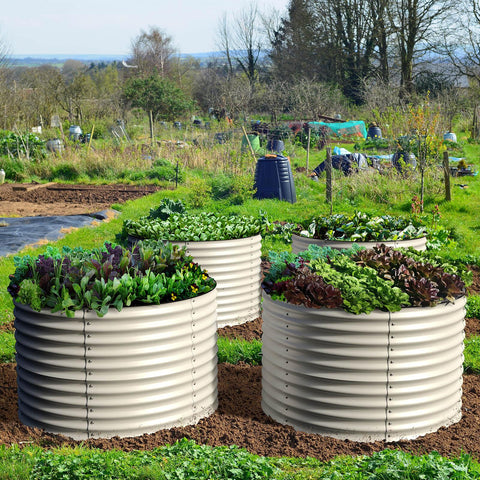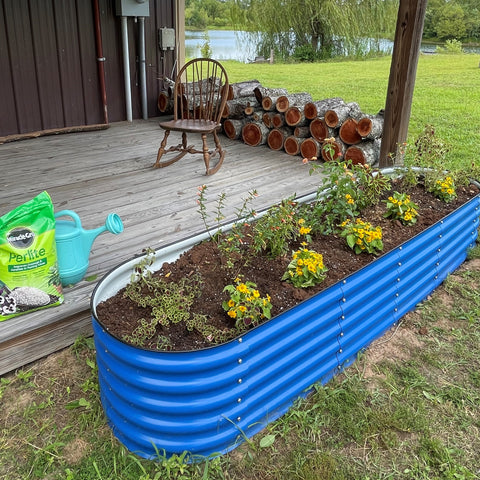Should A raised Garden Bed Be Covered In Winter?
Year after year cold weather falls in your garden. Does that mean covering your raised garden beds this winter? For gardeners, this can be a bit of a dilemma. You want to keep your plants safe from the cold, but you don't want to suffocate them.
Some people say that it is necessary to protect plants, while others believe that an additional layer will only cool the soil, which may suffocate plants and cause more problems. So, what is the correct answer?
Cover your garden beds. - Yes or no?
The answer is, yes, depending on what plants you have.
If you live in an area where snow falls in winter, many experts recommend covering your garden bed with thick coverings or plastic to protect sensitive plants from potential damage. This additional protective layer can prevent soil erosion, nutrient depletion, and help prevent the growth of harmful weeds.
Eventually, all gardens can benefit from some winter protection. From trees and shrubs to perennial gardens, covering is a good idea. If you have sensitive plants, your crops will benefit from some winter protection, and your indoor plants will like to be moved indoors.
Plants such as rosemary and beet can survive the winter well if they are covered with mulch, while roses should be covered with burlap. For vegetable gardens, harvest cool weather crops and then cover them.

Step by step guide to preparing raised garden beds for winter
Raised garden beds are a great way to grow your own vegetables, herbs and other plants. The key to making sure your garden bed stays in winter is to be fully prepared for the cold months ahead. In this step-by-step guide, you will find the best way to prepare a raised garden bed for winter and stay healthy until spring.
Step 1 – Take some photos
With the seasons changing and winter approaching, it is easy to forget what happened in the garden in summer. By taking some time to track the progress of the garden, you can protect these memories and make wise decisions for the next season.
Whether you are writing notes about good growth or struggle, detailing any problems with pests and diseases, or just writing down quick sketches of plants and their locations, recording your garden will help you plan for future success.
Step 2 - Clean up your year
Annuals are plants that can only live for one year. Once they bloom and seed, they will not grow again. To ensure that your garden is healthy and productive, it is important to remove these annual plants at the end of the season so that they do not compete with your other plants for nutrients.
Whether you choose to compost these dying annual plants or simply dig them out and throw them away depends largely on your personal preference. However, if you decide to compost them, make sure they are free from any pests or diseases. Adding diseased vegetation to the compost can spread the problem to other plants.
Step 3 – Clean up perennial plants
In order to maintain the healthy growth of perennial plants, just trim off any dead areas. Next, add a thick covering under the plants.
Be careful not to over prune or fertilize, as this will encourage fragile new growth in the cold winter.
Step 4 – Cover the raised garden bed or bring the plants indoors
If you want to keep your sensitive crops alive throughout the winter, one option is to cover them with straw or burlap. Alternatively, you can pot smaller plants and bring them to sunny, south facing or west facing windows.
In order to ensure their health in these cold months, it is important to keep potted plants relatively dry. When they are dormant in low light, they are given the least water. Only when the days get longer and warmer can normal watering begin again.
Step 5 – Clean up the debris
An important step is to rake and remove any fallen leaves or fruit from the garden bed. This helps prevent pests and diseases from hiding in the soil, which may cause problems for your plants once spring comes.
Step 6 – Plant cover crops (optional)
Looking for a way to improve soil health and prevent erosion? Consider planting mulch crops! These living coverings are perennial varieties that thrive in autumn. This makes them the perfect choice to protect the soil in winter.
First, consider planting rye or clover, as these are some of the most effective mulch crops. Just make sure you have a plan to plant them back into the soil in the spring. Otherwise, you may end up dealing with thick rye beds instead of healthy soil!

Professional tips: Although it is not a cover crop, if you want to plant some fresh garlic in spring, it is time to plant it now!
Raise your shield!
In general, preparing a raised garden bed for winter is an important step. It ensures that your plants continue to thrive in spring.
By following these simple steps, you can give your plants the best chance to survive the cold months and recover stronger when warm weather returns. Remember - it's never too early to start thinking about spring gardening!
